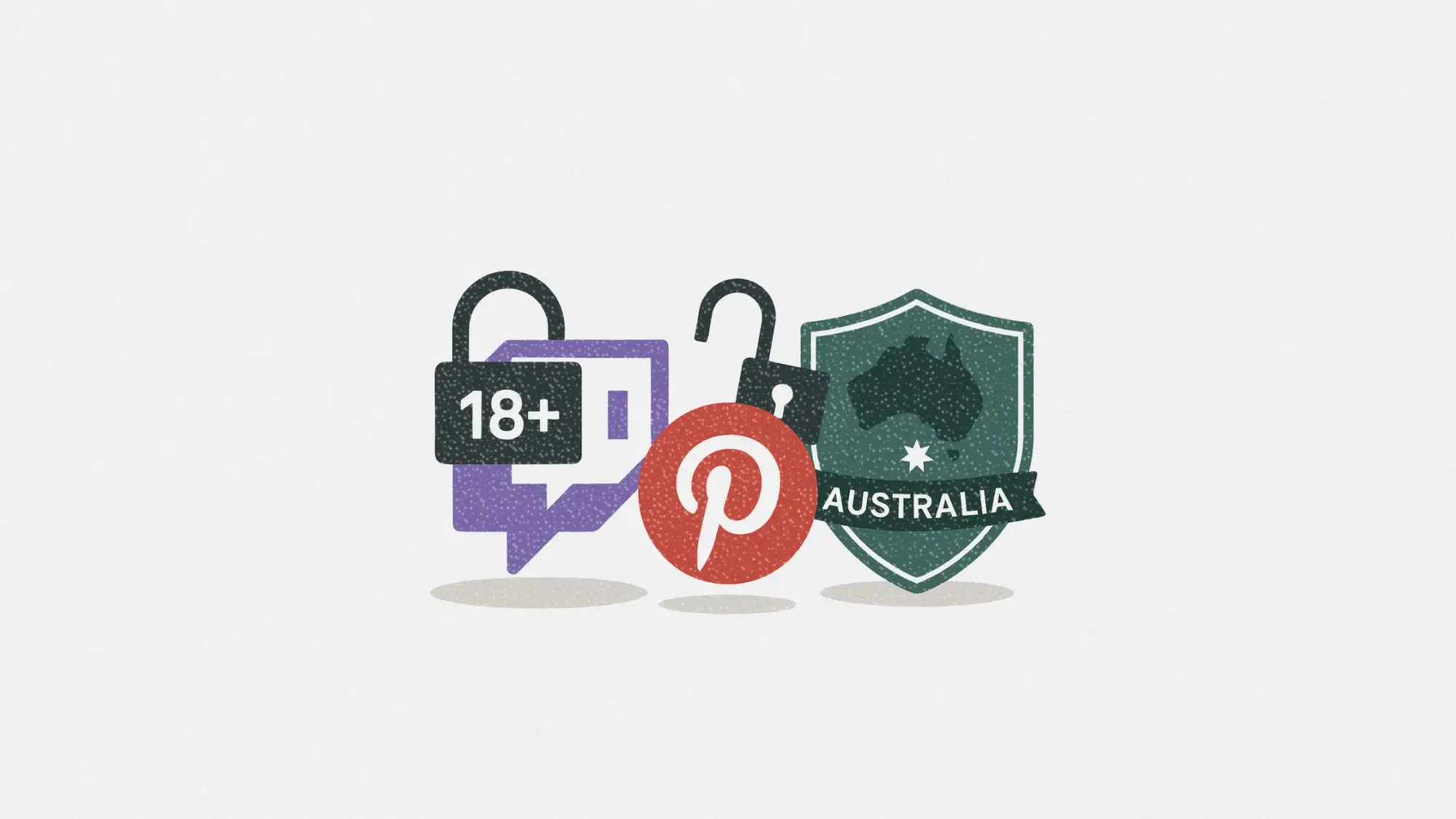Australia bans Twitch for teens under 16, Pinterest gets a pass
Australia’s eSafety regulator updates its teen ban list ahead of December rollout. Here’s what brands and platforms need to know

Just weeks before Australia’s strict new underage social media rules go into effect, the national online safety regulator has added Twitch to the list of platforms banned for users under 16. Pinterest, however, was left off the list. This raises fresh questions about how platforms are evaluated under Australia’s Social Media Minimum Age (SMMA) framework.
The new rules take effect on December 10, requiring age-restricted platforms to block under-16s from creating accounts.
This article explores why Twitch was added, why Pinterest was not, and what these changes mean for marketers, platform owners, and compliance leads managing regional user strategies.
Short on time?
Here is a table of content for quick access:
- What happened: Twitch banned, Pinterest spared
- Why it matters: Australia sets a precedent for age-gating enforcement
- What marketers should know

Twitch banned, Pinterest spared
Australia’s eSafety Commission has formally labeled Twitch as an "age-restricted social media platform" due to its interactive livestreaming and real-time engagement features. This classification means that users in Australia must be at least 16 to create a new Twitch account starting December 10, 2025. Existing underage accounts will be deactivated by January 9.
Twitch’s global policy allows users 13 and older to sign up, with parental involvement required if they’re below legal adulthood in their region. But that won’t be enough to satisfy Australia’s incoming SMMA standards.
Pinterest, by contrast, dodged the restriction. According to eSafety, the platform’s core function—collecting images and ideas—does not meet the threshold for age-restricted social media use, which typically involves chat, comments, or interactive broadcasting. Pinterest has yet to publicly respond to the decision.
Australia sets a precedent for age-gating enforcement
Australia’s SMMA law passed roughly a year ago, but enforcement was delayed to give platforms time to prepare. Tech giants including Meta and Google had previously requested postponement until the country completed its age-verification trials.
That time is now up. Alongside Twitch, the platforms already included in the underage ban include Facebook, Instagram, TikTok, Snapchat, X, YouTube (excluding YouTube Kids and Google Classroom), Reddit, and local streaming player Kick.
The country’s approach is attracting international attention as other governments explore their own age-gating strategies. As of August 2025, 24 U.S. states have passed age-verification laws for online platforms. In the U.K., the Online Safety Act enforces age checks for platforms hosting high-risk content such as self-harm or eating disorders.
What marketers should know
For brand strategists and social media managers, Australia’s regulatory update isn’t just a compliance story. It’s a signal of where things are headed globally. Here are key takeaways:
1. Platform risk is regional now
Twitch might be accessible for 13-year-olds in the U.S., but that same demographic will be blocked in Australia. Brands running global campaigns need to ensure their targeting, influencer partnerships, and engagement strategies reflect localized rules. Regional compliance is no longer optional.
2. Pinterest’s exemption highlights the gray areas
The decision to spare Pinterest underscores how nuanced these policy calls can be. Marketers should consider whether their chosen platforms lean more toward “social interaction” or passive content discovery and prepare messaging accordingly. Visual-first channels like Pinterest may face fewer restrictions, at least for now.
3. Age verification tech is becoming a strategic priority
Australia offers a self-assessment tool for platforms, but enforcement will depend on their ability to verify age. For marketers, this means potential shifts in ad delivery, user data availability, and audience measurement. Agencies and in-house teams should closely monitor which platforms are investing in robust verification tools and how that may affect campaign reach.
4. Youth-centric campaigns need a backup plan
If your audience includes teens, it’s time to diversify. With major platforms tightening access, brands need to explore safer, compliant channels. That could include curated content hubs, educational campaigns, or even YouTube Kids when appropriate. Expect influencer marketing to shift toward older Gen Z or millennial creators as teen engagement windows narrow.
Australia’s Twitch decision sets a clear tone. Engagement-heavy platforms that lean into interactivity are likely targets for underage restrictions. And with similar laws gaining traction worldwide, marketers who stay agile—adjusting channel strategy, targeting methods, and content format—will be better positioned to weather the next wave of platform regulation.
While Pinterest’s exemption may seem like a win for passive discovery apps, that status could shift as the regulatory landscape evolves. In the meantime, platforms and marketers alike should treat age verification and regional risk analysis as must-haves in their 2026 planning cycles.




